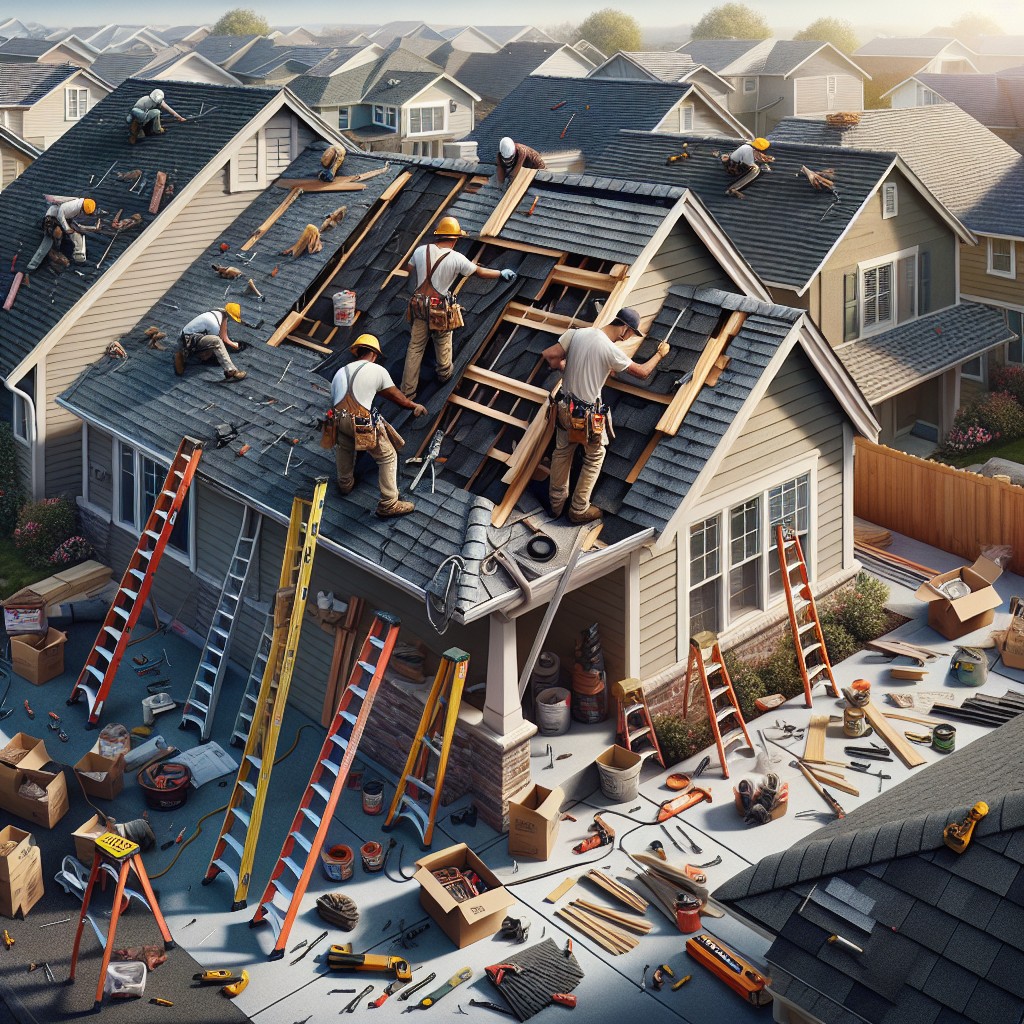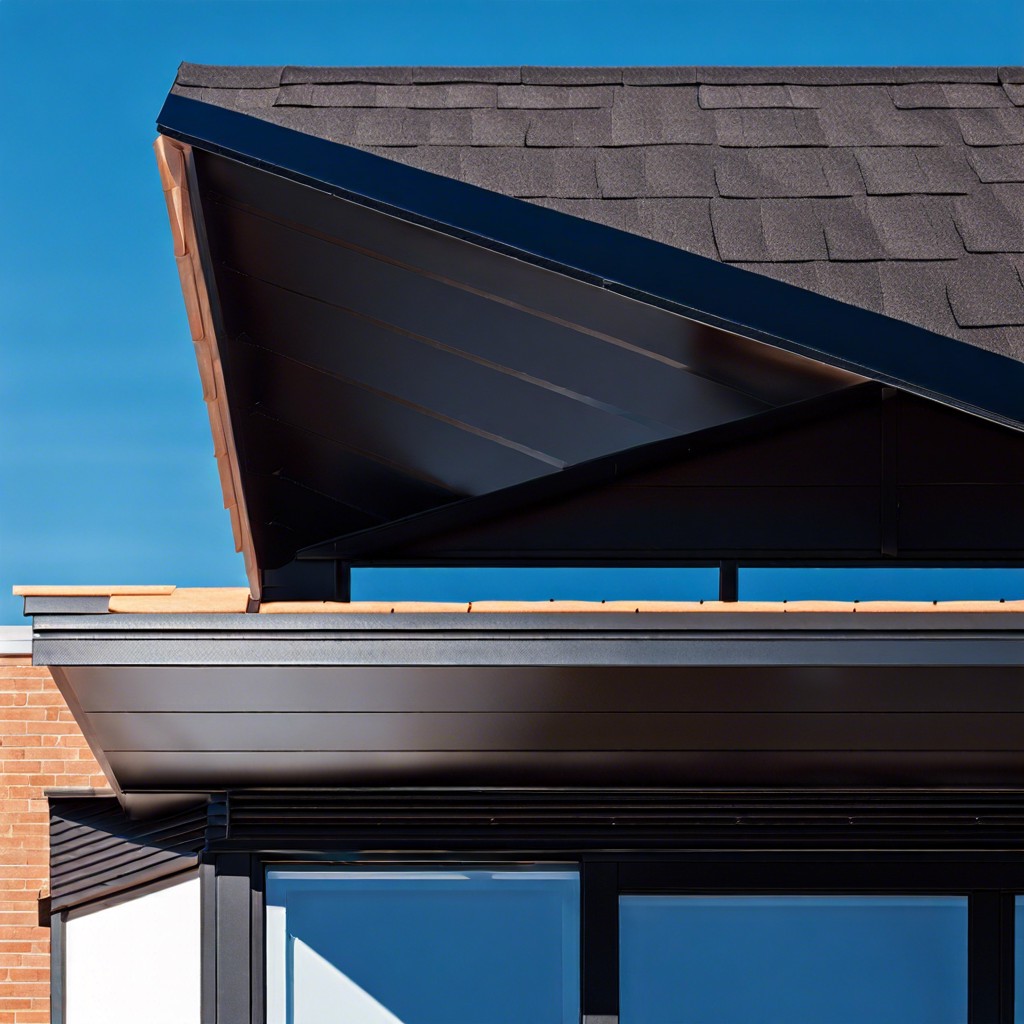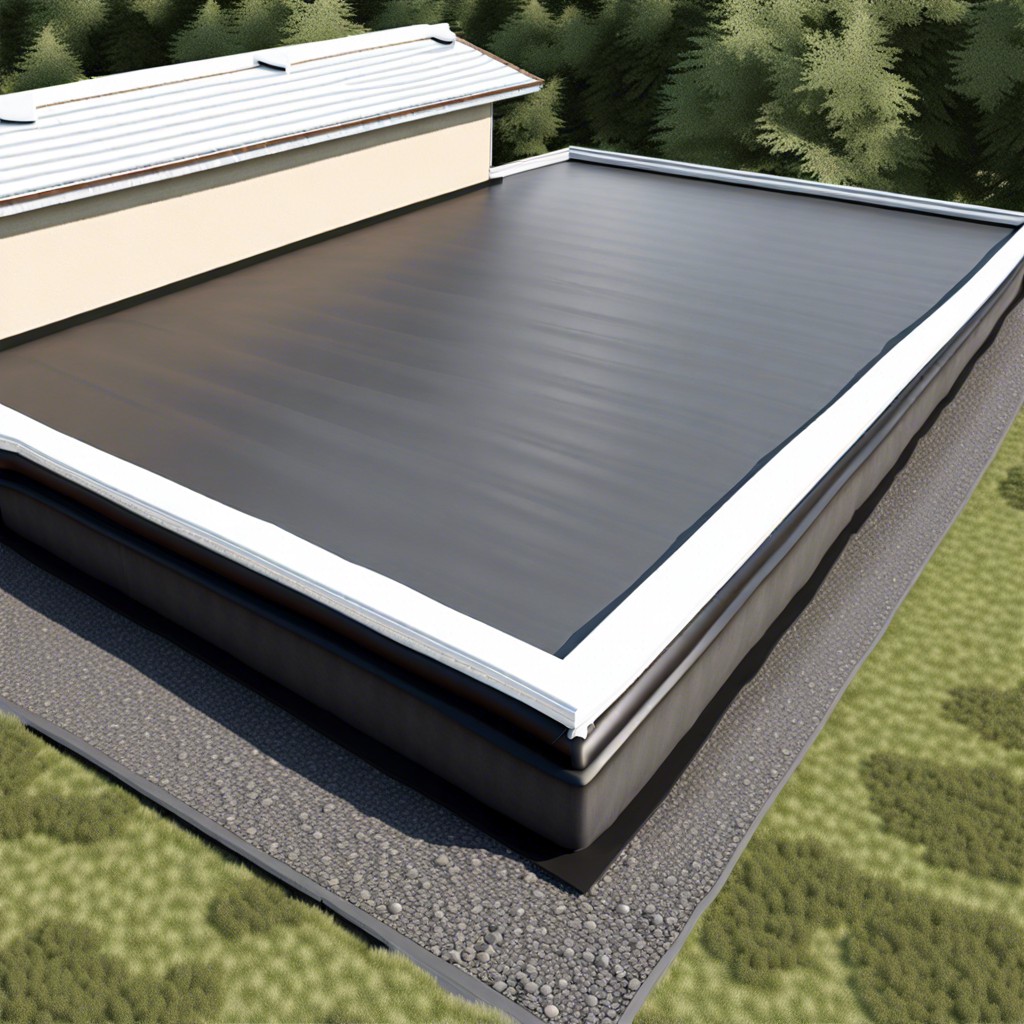Last updated on
Discover the typical timeline for a roof replacement process, from initial inspection to project completion.
Key takeaways:
- Roof size and complexity impact replacement timeline.
- Different roofing materials affect the pace of work.
- Weather conditions can cause delays in roof replacement.
- Work crew size and experience influence project efficiency.
- Preparation and set-up before installation are critical steps.
Factors Influencing Roof Replacement Time

The duration of a roof replacement project is not one-size-fits-all due to several influencing factors.
- Roof Size and Complexity: A larger roof will naturally take more time to replace than a smaller one. The roof’s complexity, such as the number of layers, slopes, and valleys, also impacts the timeline. Steeper roofs require more time for installation and safety measures.
- Roofing Materials: The type of materials can affect the pace of work. Asphalt shingles are typically quicker to install compared to more complex materials like slate or tile that may require specialized skills and handling.
- Weather Conditions: Ideal roofing is performed in dry conditions. Rain, snow, or extreme cold or heat can hinder progress, causing delays. Work might pause to ensure the safety of the crew and the integrity of the installation.
- Work Crew Size and Experience: A larger, experienced crew can work more efficiently than a smaller or less experienced team. Professional roofing teams balance speed with precision to ensure a high-quality result.
Understanding these variables can help set realistic expectations for the timeframe needed to complete a roof replacement project.
Roof Size and Complexity
The dimensions of the structure largely determine the duration of a replacement project. A smaller, single-story home may take as little as a day, whereas larger homes can require up to a week. Complexity also plays a role; steep slopes, multiple gables, and architectural features like skylights or chimneys necessitate additional time for careful navigation and installation. The roofing material chosen affects the timeline as well; heavier materials like tiles or metal require more time for handling and securing compared to lighter asphalt shingles. It’s essential to consider these factors when anticipating the project’s duration.
Weather Conditions
Optimal weather conditions are critical for a timely roof replacement. Clear skies and moderate temperatures allow roofing crews to work efficiently and safely. Rain, snow, or extreme temperatures can halt work and cause significant delays.
Severe weather not only impacts the day it occurs but can also affect subsequent days by creating hazardous conditions, like a wet or icy work environment. Furthermore, high winds can pose safety risks and make it difficult to handle materials. For regions with unpredictable weather, scheduling flexibility is key, and roofing contractors often monitor forecasts closely to plan their work.
It’s advised to consider seasonal patterns and choose a time of year that’s typically more stable weather-wise to minimize potential delays.
Roof Replacement Timeline Breakdown
Preparation and set-up are initial steps that typically take one day. During this phase, the area around the house is secured, and materials and dumpsters arrive on-site.
Following setup, the actual roof installation begins, which can vary in duration. A straightforward asphalt shingle roof on an average-sized home might take 1-3 days to install. For larger homes, or those with complex designs, steep slopes, or premium materials like metal or tile, this process may extend to 1-2 weeks.
It is important to note that while most of the work is completed during daylight hours, crews often arrive early to maximize productivity. Homeowners should expect some noise and vibrations throughout this period as old materials are removed and new shingles are installed.
Preparation and Set-Up
Before shingles and tools come into play, careful preparation ensures a smooth operation. A professional crew begins by securing the surrounding property, safeguarding landscapes, and setting up equipment. Safety measures are implemented to protect workers and homeowners, including the use of harnesses and perimeter ropes.
The stage is set by removing the old roofing material. This process accounts for a significant portion of the pre-installation phase. Containers are positioned to collect debris, and magnetic tools may be used to gather stray nails and metal parts, keeping the site tidy and reducing risks.
A thorough inspection of the roof deck follows. Here, any underlying issues such as water damage or structural weaknesses are identified. This step is critical: it sets the foundation for a resilient new roof. Remediation of any found issues must occur before proceeding to the actual installation phase.




